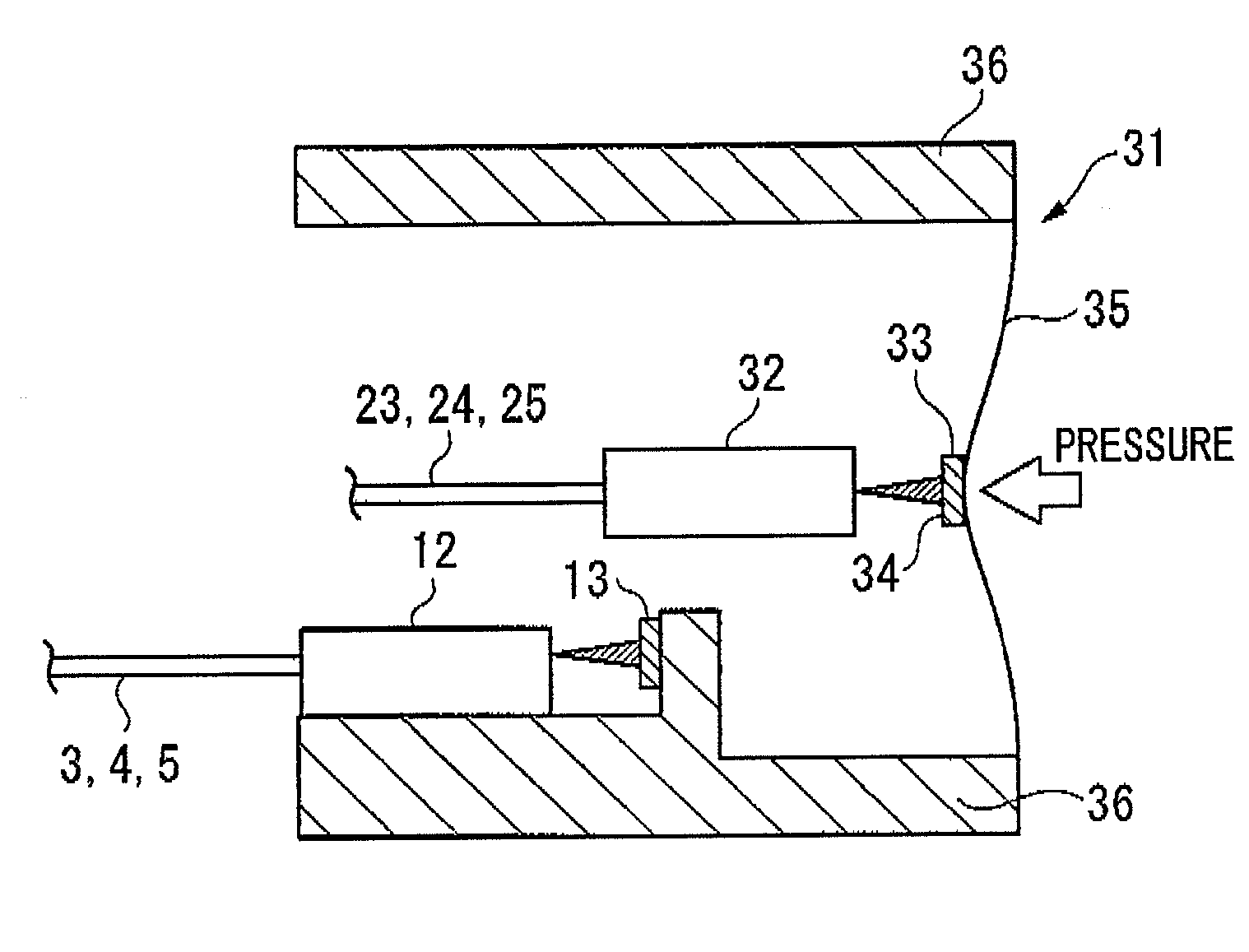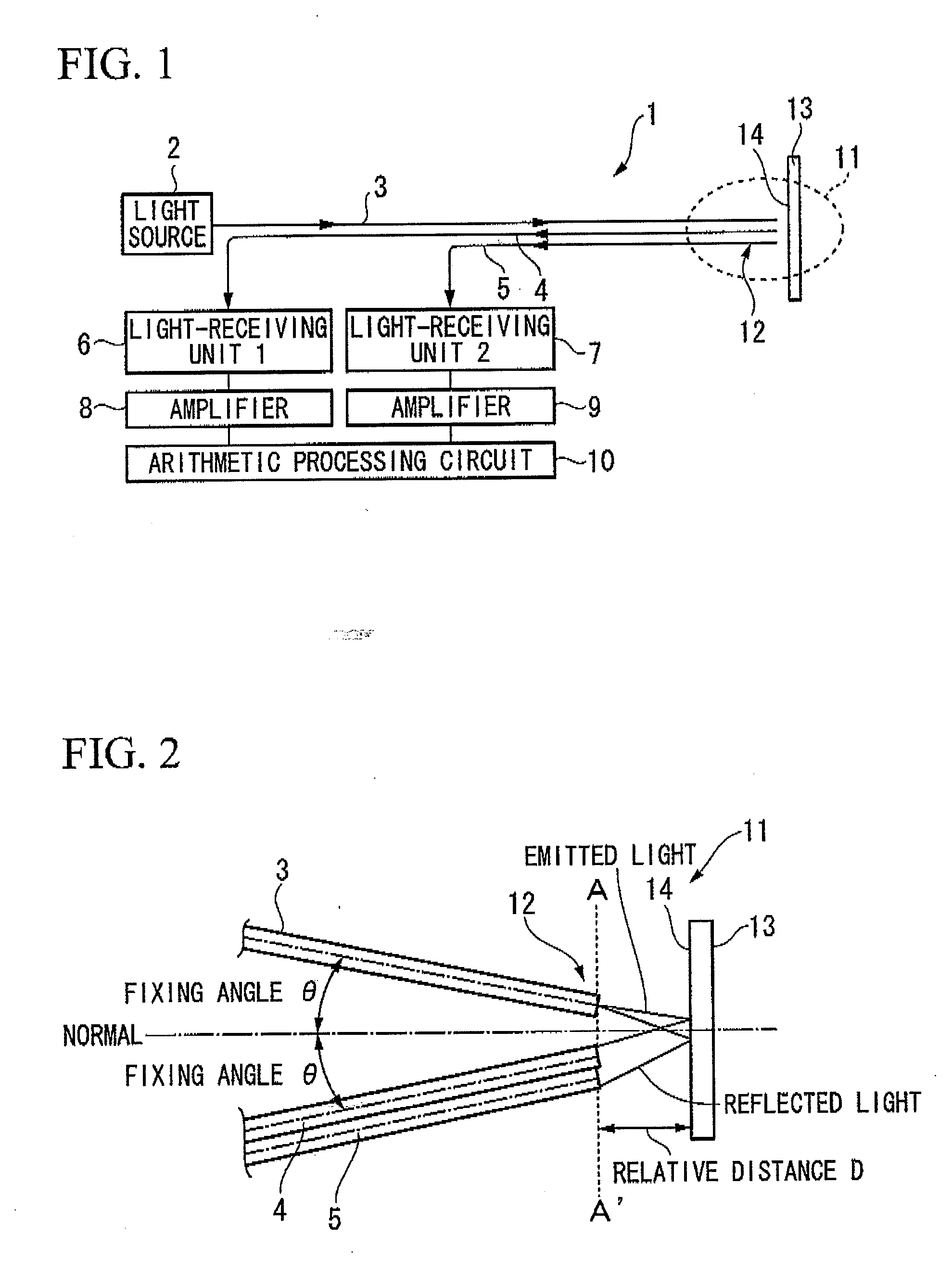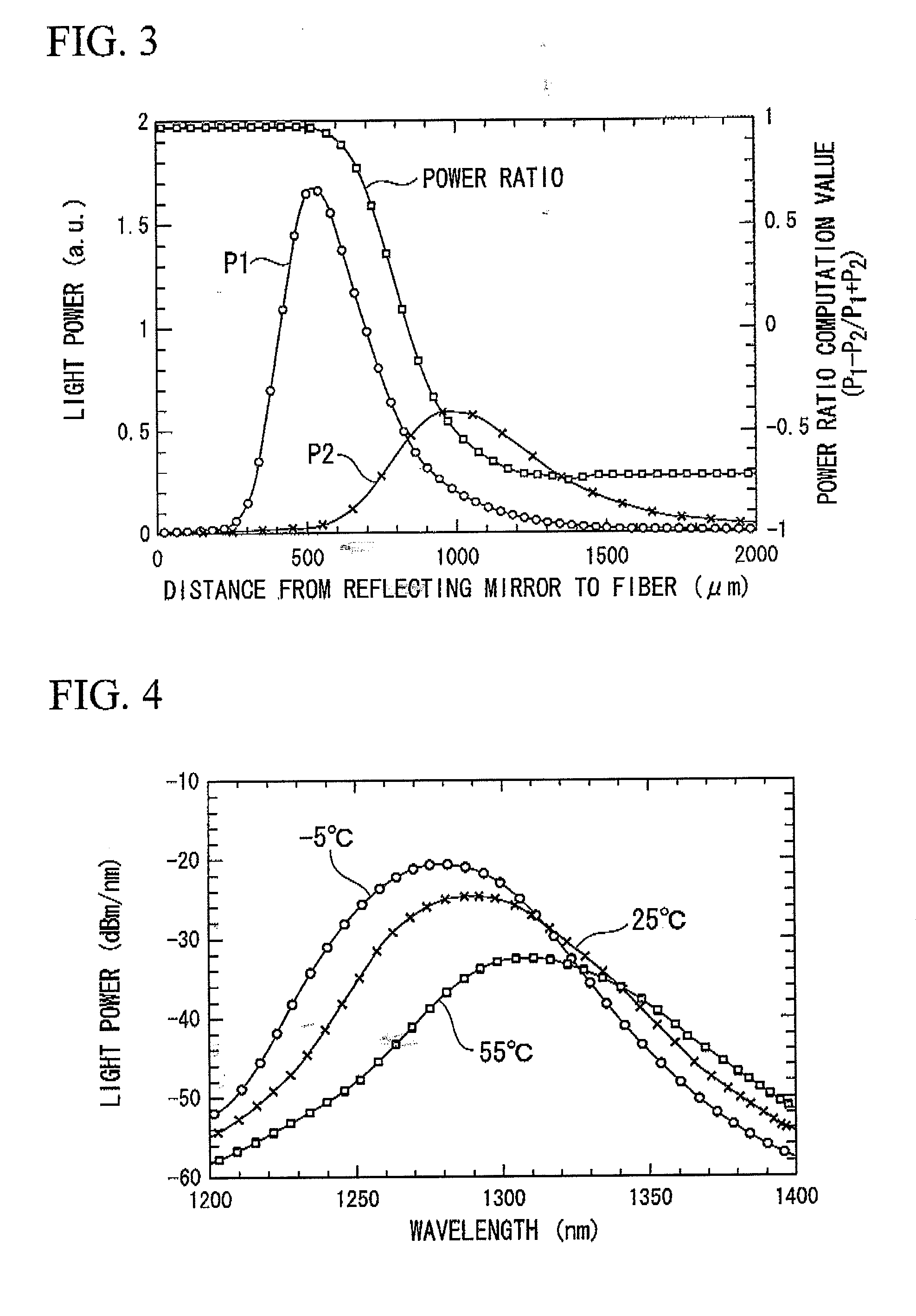Optical fiber thermometer and temperature-compensated optical fiber sensor
a technology of optical fiber and temperature compensation, which is applied in the direction of instruments, heat measurement, fluid pressure measurement, etc., can solve the problems of reducing the precision of measuring, reducing the accuracy of measuring, and expensive measuring devices, so as to achieve constant temperature measurement capabilities, increase the accuracy of measuring devices, and reduce the cost of measuring devices
- Summary
- Abstract
- Description
- Claims
- Application Information
AI Technical Summary
Benefits of technology
Problems solved by technology
Method used
Image
Examples
Embodiment Construction
[0086]An embodiment of the invention will be explained with reference to the drawings.
[0087]FIGS. 1 to 2 and FIGS. 7 to 8 are diagrams of an embodiment of an optical fiber thermometer of the invention, FIG. 1 being a configuration diagram of an optical thermometer, FIG. 2, an enlarged configuration diagram of a measuring unit of the same. optical fiber thermometer, FIG. 7, a cross-sectional view along the line A-A′ of FIG. 2, and FIG. 8, a side view of the configuration of a measuring unit. In these diagrams, reference numeral 1 represents an optical fiber thermometer, 2 represents a light source, 3 represents an optical fiber for projection, 4 and 5 represent optical fibers for light-reception, 3A to 5A represent cores, 6 and 7 represent light-receiving units, 8 and 9 represent amplifiers, 10 represents an arithmetic processing circuit, 11 represents a measuring unit, 12 represents a three-core array for measuring temperature, 13 represents a mirror, 14 represents a reflecting face...
PUM
 Login to View More
Login to View More Abstract
Description
Claims
Application Information
 Login to View More
Login to View More - R&D
- Intellectual Property
- Life Sciences
- Materials
- Tech Scout
- Unparalleled Data Quality
- Higher Quality Content
- 60% Fewer Hallucinations
Browse by: Latest US Patents, China's latest patents, Technical Efficacy Thesaurus, Application Domain, Technology Topic, Popular Technical Reports.
© 2025 PatSnap. All rights reserved.Legal|Privacy policy|Modern Slavery Act Transparency Statement|Sitemap|About US| Contact US: help@patsnap.com



